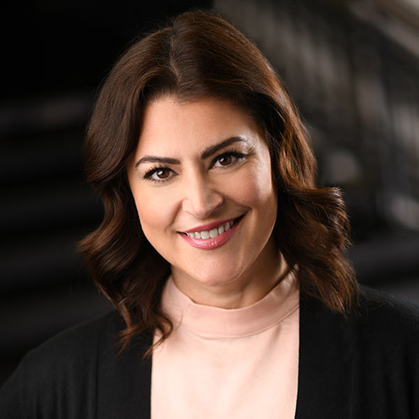Healthcare Donor Fatigue: How to Reignite Passion and Purpose

Last year, healthcare organizations faced audience engagement challenges—donor retention was down by 2.5%, and retention of new donors decreased by 4.8%.
One of the primary drivers of decreased donor engagement is donor fatigue, when donors feel overwhelmed by too many fundraising requests, too little impact information, and impersonal donor communications. Donors may also experience the emotional drain of compassion fatigue when faced with what seems like overwhelming healthcare challenges and emergencies.
If donors are unsubscribing from your email newsletters, unfollowing your social media pages, or ceasing to support you, it’s time to create a strategy to combat donor fatigue and reignite a shared sense of excitement and purpose.
Read on to explore five effective healthcare fundraising tips for revamping your donor relationships and increasing supporters’ enthusiasm for giving.
1. Use impact storytelling to reframe the narrative.
Donor fatigue often results from seeing a constant funding need without visible results. Some donors don’t want to read lengthy reports or written summaries to understand those results—they want to see the impact immediately.
Reposition your impact storytelling to spotlight short, high-impact stories that demonstrate how donor contributions create tangible change. This outreach approach appeals to donors’ need for quick information and builds trust with your audience, showing them that you’ve put their gifts to good use.
For example, let’s say your organization recently concluded a campaign to create patient care packages with items that enhance patient comfort: fuzzy socks, sweet treats, and handwritten cards from hospital staff and volunteers.
Instead of drafting a 2,500-word blog post diving into all the minute details of how the initiative came to be, you might send donors a two-minute YouTube video with key points. Share that donors’ support funded 500 patient care packages and include quick interview clips from patients expressing their appreciation.
→ Action step to take today: Audit your recent testimonials or case studies to identify at least three impact stories to highlight in next week’s donor emails and social media posts.
2. Segment donors and personalize outreach.
Donors tend to disengage if your message feels generic or repetitive. Donor segmentation is a useful way to add a personal touch to your communications so you really catch their attention.
To reaffirm donors’ passion, segment them by interest area. For example, your organization could create segments for donors who give to the following initiatives:
- Cancer research
- Children’s health
- Community clinics
Once you have your segments, send donors messages aligned with their giving preferences. For donors who like to give to your community mobile clinics, focus your communications on updates for that program. You could create an interactive map to show donors the extent of your reach in the community and case studies describing the benefits that your clinics offer to families in need.
→ Action step to take today: Create a brief donor preference survey to ask supporters which aspects of your mission appeal to them most. Segment donors based on their responses and send tailored outreach to different groups based on their interests.
3. Spotlight non-monetary ways to give back.
If donors feel like ATMs rather than valued supporters of your cause, it’s no wonder they might feel disengaged from your organization. Your fundraising strategy should balance donation requests with a variety of non-monetary opportunities to get involved, still in support of your mission.
Encourage supporters to engage in multiple non-financial charitable methods of support, including:
- Volunteering
- Peer-to-peer fundraising
- Advocacy campaigns
- In-kind donations
- Events
Just as you do with donations, provide clear impact information about how these efforts support your fundraising and your mission. For instance, let volunteers know that their support at your fundraising 5K event allowed your organization to safely host 500 more participants than the previous year, bringing in $15,000 for your mission.
→ Action step to take today: Add one non-monetary engagement option to your next campaign. For example, let supporters know that sharing links to your next crowdfunding campaign on social media is just as important as donating.
4. Create micro-campaigns with clear next steps.
Large, ongoing fundraising needs can be overwhelming for supporters. For example, if your organization focuses solely on promoting its capital campaign with a seven-year timeline, supporters may feel daunted by the scale of the effort and may not recognize how their contributions can make a meaningful impact.
That’s why we recommend hosting a variety of shorter fundraising campaigns throughout the year with bite-sized, time-bound goals.
To get started, you could host a 24-hour giving day on a meaningful day for your cause. For example, a nonprofit dedicated to funding breast cancer research could host its giving day on October 13, which is National Metastatic Breast Cancer Awareness Day. Let supporters know you’re looking to raise $3,000 for your cause in one day via online fundraising.
You could also create a campaign centered around funding one specific need, such as a social media crowdfunding campaign with a $4,000 goal to repair your community shuttle.
→ Action step to take today: Frame your next campaign around a single, achievable milestone, whether it’s a time-based goal or a specific funding need.
5. Rekindle purpose through strong donor recognition.
Above all, donors want to feel like their efforts matter. Developing a holistic and personalized donor recognition plan will help you fight donor fatigue and enhance long-term donor engagement.
Move beyond generic thank-you messages by highlighting donors through:
- Email newsletters sent to your full subscriber list with donor shout-outs and spotlights
- Personalized videos where staff members and/or volunteers specifically thank donors by name and mention the unique impact of their gift amounts
- Handwritten thank-you notes from community members impacted by your mission
Frequent and authentic donor acknowledgment shows supporters that you value and appreciate their contributions every time they decide to give. It demonstrates that you don’t take their commitment for granted.
→ Action step to take today: Draft a recognition plan that outlines how each donor tier will be recognized in the next quarter. For example, create custom appreciation videos for major donors, send handwritten thank-you notes to mid-tier donors, and draft personalized emails for smaller donors.
In conclusion
Ultimately, the easiest way to combat donor fatigue is to recognize the warning signs before it starts and deploy these strategies to slow its spread.
Run a CRM report to identify donors who haven’t given within the past six months. Prioritize reengaging these donors by sending them surveys to better understand their interests and communication needs, demonstrating the impact and importance of donations to your mission, and expressing your appreciation for their previous involvement.
With a proactive approach, you can mitigate donor fatigue and set up your healthcare fundraising efforts for greater future success.
 Free Resource
Free Resource


